Fukushima: The Story of a Nuclear Disaster
A team of scientists and a Pulitzer Prize-winning journalist recount, in the new book "Fukushima," what happens when a catastrophe strikes that no one imagines. Early and often comes the warning: Hubris Ahead.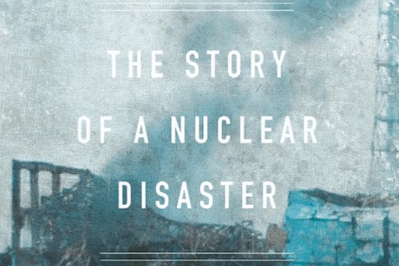 The New Press
The New Press
The New Press
|
To see long excerpts from “Fukushima” at Google Books, click here. |
“Fukushima: The Story of a Nuclear Disaster” A book by David Lochbaum, Edwin Lyman, Susan Q. Stranahan and the Union of Concerned Scientists
In “Fukushima: The Story of a Nuclear Disaster,” a team of scientists and a Pulitzer Prize-winning journalist recount what happens when a catastrophe strikes that no one imagines. No one with the clout to prevent it, that is. It’s a tale of entwined worlds that must cooperate intelligently in order to protect the public. The tensions and cross-purposes among them, however, lead to indecision, inaction and increased calamity. In crisis, these worlds — the nuclear energy industry, two powerful governments, and international regulatory commissions — are about as effective as a machine lubed with super glue.
Early and often comes the warning: Hubris Ahead. Words and phrases like prevailing wisdom, low risk, practically unthinkable, unlikely, government assurances, assumptions, confidence, remote possibility and a situation we had never imagined appear throughout; they indicate attitudes about potential dangers, and point to why the earthquake and tsunami had such dire effects on Fukushima Daiichi Nuclear Power Plant and Japan.
This chronicle, another in the continuing tragedy of the human gamble against nature, is mostly peopled by players who could be said to represent knowledge, fear, power and money. In standing, the first of these comes last. Corporate captains, regulators and leaders charged with public safety cover up or sidestep facts that, if acknowledged and addressed, could imperil their coffers or careers. As in the U.S., there’s a symbiotic and dangerous relationship between government and industry in Japan. The route from the public to the private sector is known here as the revolving door; there, the delicate name for that greasy highway is “amakudari,” translated as “descent from heaven.”
The coastal earthquake that kicked off a trail of destruction and mayhem on March 11, 2011, measured 9.0 on the Richter scale, but was prematurely reported by the government as 7.9, 45 times less energetically powerful. It’s the biggest temblor in Japanese history, but the fifth largest ever recorded, and the authors present other reasons that industry and government should not have feigned surprise:
“Headlines scattered over the decades built a disturbing picture. Reactor owners falsified reports. Regulators failed to scrutinize safety claims. Nuclear boosters dominated safety panels. Rules were buried for years in endless committee reviews. ‘Independent’ experts were financially beholden to the nuclear industry for jobs or research funding. …”
Plenty of warnings were sounded, like those from noted seismologist Katsuhiko Ishibashi who, since 1997, had predicted grim scenarios that a catastrophic earthquake could set in motion. Other experts cautioned that tsunami reinforcements at Fukushima Daiichi were inadequate; they were made safe only up to 20 feet because plant owner Tokyo Electric Power Company determined the danger of a wave above that height was “unrealistic.” In an island nation that generated 30 percent of its energy at nuclear plants and has over 1,000 earthquakes a year, company concerns about sending the wrong message to the public outweighed scientific evidence.
When the tsunami hit Fukushima Daiichi, system failures flowed like lava from an active volcano. For three of their six reactors, the countdown to meltdown began. The earthquake took out plant AC power, and the tsunami drowned backup generators, cables, gauges and multiple critical tools. Internal emergency communications became spotty, as would be expected if those in charge had allowed themselves to imagine that such a destructive earthquake and tsunami could happen.
Within two hours of the 50-foot water wall flooding the plant, all backups for disaster control were kaput. The Fukushima incident was, like many nuclear accidents, “beyond design-basis.” This refers to power stations designed with accident management plans that function up to a certain degree of impact intensity. That threshold was much lower than the 9.0 quake and subsequent tsunami. Despite the risk, the Nuclear Regulatory Commission has also allowed U.S. plants to rely on design-basis planning, and for licensees to develop their accident management voluntarily. (Taking plants offline for seismic evaluation and upgrades is expensive: After the 2007 earthquake near the Kashiwazaki-Kariwa nuclear power plant, all seven of its reactors underwent work. That cut production by 20 percent; owner TEPCO lost $1.44 billion and its stock fell 30 percent that year.)Even more difficult to fathom, TEPCO set accident management procedures for station blackouts that would last just 30 minutes and affect only one reactor per site. But no nuclear accident resulting in blackout to date has affected only one reactor. Further, no worker has ever been trained at any nuclear plant for “worst case scenario” responses, because that’s a hot concept, politically speaking. Nor has failure of all backup defenses ever been considered. Consequently, unprepared workers attempted to control beyond-design chaos of a disaster eventually rated level 7, the worst on the 1-7 nuclear accident scale. Oh, and the Fukushima plant blackout lasted 10 days.
Over the next few days after the tsunami, explosions blew out parts of four containment structures, dramatically increasing the potential radiation hazard to workers and the public. Because of the blackout, no one was sure which likely cause was behind each explosion. Desperate and resourceful attempts were made to get water into the structures to cool reactors, many unsuccessful because of debris blocking outside access, inadequate pumping tools and weak jury-rigged power sources. Broken pressure gauges, radiation detectors and measuring tools, on top of scarce information inside and between containment structures, meant everyone was working in perilous best-guess mode.
The complexities were many, and the authors explain known factors contributing to the cascade of dangerous dominoes, often more than once — the timing and dangers of cooling procedures, hydrogen, spent fuel pools, fissile material behavior, venting pros and cons, and more. (Mysteries about specific stages of the accident will never be solved because life-threatening radiation levels at the power plant still prevent forensic investigation.) Incomplete or wrong information from TEPCO and government officials circulated, and multiple versions are reported here, including corrections. Exhaustion and a 13-hour time difference between Washington, D.C., and Japan further muddied communication.
Washington became involved in the disaster quickly for a few reasons: The Nuclear Regulatory Commission, from which the president and Congress get information and advice on science, industry and policy matters, is located just outside D.C. Also, about 160,000 American citizens lived in Japan in 2011. But perhaps most worrying were the 35 reactors and 23 containment structures in use at U.S nuclear power plants that were the same type as the ones failing at Fukushima Daiichi. The Mark 1 reactors and containment structures were all designed and manufactured by General Electric. A rather large question loomed: Could this happen in the U.S.?
The interactions and impacts of the international regulatory agencies are as complicated as the technical parts of the story. Few in this arena come off as even halfway responsible; many appear cowed by industry expectations. Their appeasing, obfuscating ways preceded the accident and have persisted since. (Arguments continue about how many people’s health was really destroyed from the radiation.) Still, it comes as a big WOW when the contents of an NRC conference report, and its date, are revealed in Chapter 10.
“Now, as the [international] conference was winding down, a few dozen people had gathered to hear a panel discuss the latest results of an NRC research project entitled State-of-the-Art Reactor Consequence Analyses, or SOARCA, as it was known in the NRC’s acronym-rich environment. The takeaway message from the panel: even if a severe nuclear power plant accident were to happen — say an extended station blackout at a Mark 1 boiling water reactor — it wouldn’t be all that bad.
The date was March 10, 2011.”
That was the day before the Fukushima earthquake and tsunami.
In fact, for decades, American NRC regulators did computer simulations that showed the GE Mark 1 reactor containment structures fail in station blackouts. These studies were not shared with Japan. The authors of “Fukushima” speculate that if they had been shared, things might have turned out differently because Japan followed the U.S. regulators’ leads more closely after the Three Mile Island accident in Pennsylvania in 1979. But the U.S. wasn’t pushing correctives in response to its own studies, and next-generation containment structures were not deemed much better under blackout conditions.
One week into the horror show, TEPCO upgraded the accident from level 4 to level 5, in a statement blaming the crisis on “the marvels of nature,” knowing that was just partly true. And the efforts of then-Prime Minister Naoto Kan and other officials to neutralize bad news to keep the public from freaking out were as constant as they were appalling. They had long overstated the safety of nuclear energy production, but with unknown amounts of radiation escaping after the accident, one might imagine that honesty and actual leadership would kick in. Guess again. Even after inadequate evacuations began, many citizens did not know why they were being evacuated, because they were not told.
In contrast to the example set by the establishment, endangered plant engineers and staff tried everything in their minimal powers to prevent the worst potential outcomes. Many worked without sleep for days at a time, and no essential employees opted to leave to save themselves. (There’s a parallel here to soldiers taking all the risk in wars started by government heads who stay out of harm’s way.) Early in the crisis, Kan ordered the shift supervisor to stop injecting seawater into the reactor at Unit 1, even though TEPCO management had already agreed that, due to the incapacity of freshwater pumping tools, cooling with seawater was unavoidable. (Seawater is highly corrosive, and Kan knew the action could signal how bad things really were.) Masao Yoshida, the supervisor, gave the monitored order but secretly told his crew to ignore it. The writers give these dedicated people due props for their tenacity and bravery, and the rebellious incident underscores the level of foolishness added to the obstacles.The layering of facts, figures and physics makes the “Fukushima” reading experience a bit weedy, but a lot of information is needed to understand and follow events. The authors, who frequently jump back and forth in time, are challenged in presenting the timeline of the accident-induced traumas and management process clearly. The proliferation of acronyms throughout the book tested my memory, too, but some, like IDCOR, RASCAL, SARRY, and SPEEDI, add irony to a dry text.
And among the packed record that is often flattened with cliches are gems of history-as-satire, starring a cast of dunces with degrees. Two Swiftian examples: In 2005, a Japanese court ruled that the fault line near the Kashiwazaki-Kariwa plant did not exist, after a 25-year fight about location safety. Two years later, a 6.8 earthquake struck 10 miles offshore from the station. And during the Fukushima crisis, when it seemed clear that the radiation levels at the plant were reaching the allowable limits, the government considered raising the “safe” exposure level. With enough money on the line, any absurdity goes.
Despite its challenges, “Fukushima” makes a fine reference volume for understanding nuclear power production and its still-critical dangers. It’s also a mosaic of determined reconstruction, and serves as a play-by-play guide to What Not to Believe during an industrial accident. As the prescient journalist I.F. Stone warned for decades about governments: They all lie. And so it goes for most large corporations, whose PR shields give “spinning” — formerly known as lying — a shiny sophistication. Eight days into the crisis, Chuck Casto, the NRC rep in Japan working on no sleep and with little cooperation, said, “I’m just trying to figure out who the power player is over here.” This too is a crux of the story, and others about high-stakes arenas.
So life lessons abound here, but such lessons have been taught before by tragedies involving profit-driven risk taking: the Bhopal gas leak disaster in India in 1984, the Massey Energy coal mine collapse in West Virginia in 2010 and the Deepwater Horizon explosion/spill in the Gulf of Mexico in 2010, to name just a few. As I wound my way through this long saga about a short period in nuclear history, a refrigerator magnet from years ago kept coming to mind. Playing on a key line from the movie “The Sixth Sense,” it reads: “I see dumb people,” and provides an easy laugh. It’s unlikely that the educated people who helped make the Fukushima catastrophe worse are actually stupid, though they surely lack wisdom.
But if the difference in behavior and results is indiscernible, does it matter?
Your support matters…Independent journalism is under threat and overshadowed by heavily funded mainstream media.
You can help level the playing field. Become a member.
Your tax-deductible contribution keeps us digging beneath the headlines to give you thought-provoking, investigative reporting and analysis that unearths what's really happening- without compromise.
Give today to support our courageous, independent journalists.
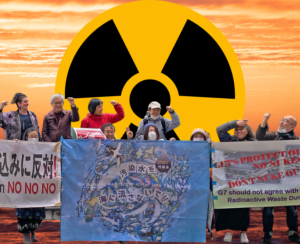
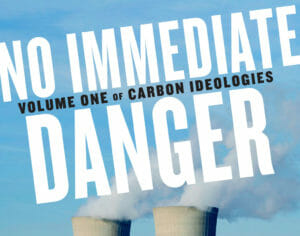
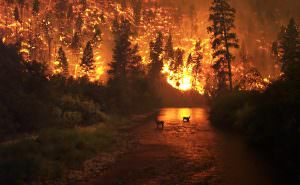
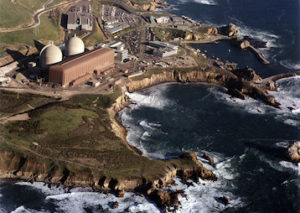
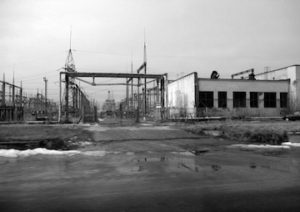
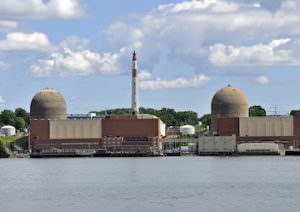
You need to be a supporter to comment.
There are currently no responses to this article.
Be the first to respond.